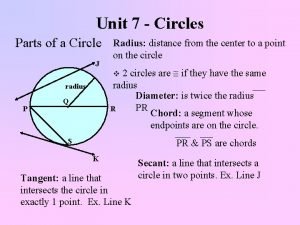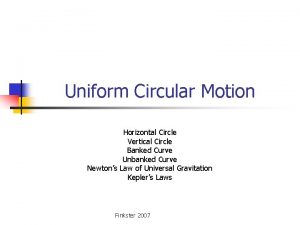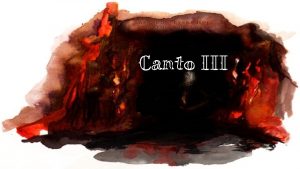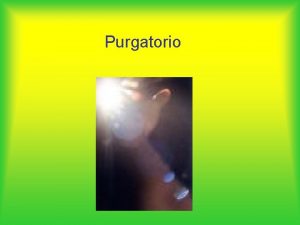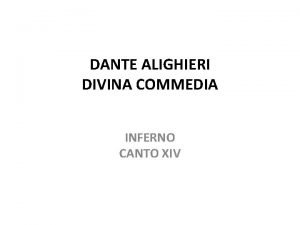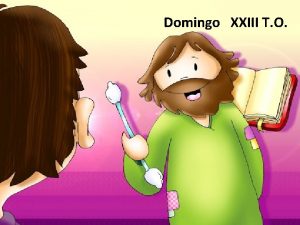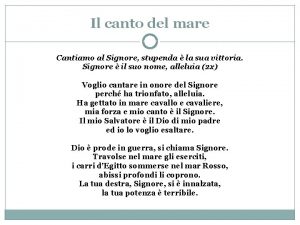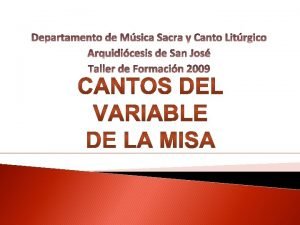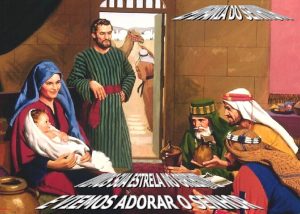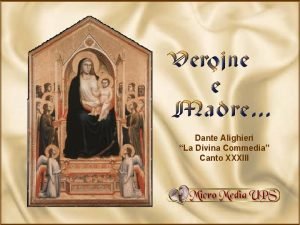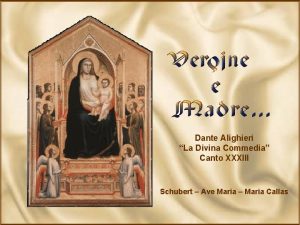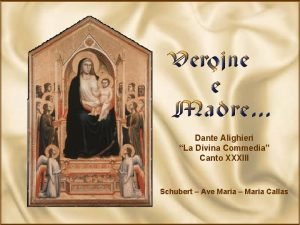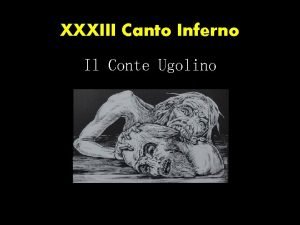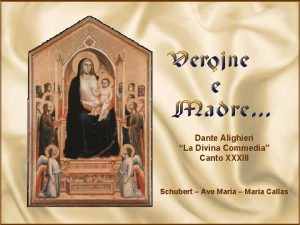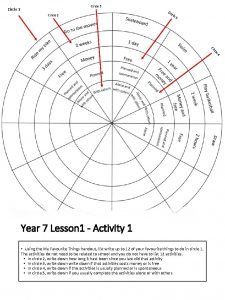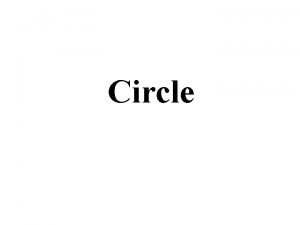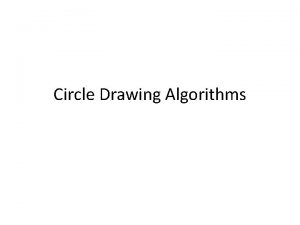CANTO XXXIII 9 th circle Cocytus 2 nd













- Slides: 13

CANTO XXXIII 9 th circle: Cocytus. 2 nd & 3 rd rounds.

2 ND ROUND: ANTENORA Sinners: traitors against their country which fits into the overall idea that the last ring is reserved for those who committed compound fraud Punishment: trapped in ice with only their heads above the surface. Contrapasso: eternally frozen in Hell due to the cold-heartedness in their lifetime. Summary: Dante witnesses one sinner, Count Ugolino, gnawing violently on the head of another sinner, Archbishop Ruggieri. • Sin: While alive, Ugolino betrayed the city of Pisa. Then Ruggieri invited him back into Pisa but ended up imprisoning him and his four sons in the Tower of Hunger. Due to the lack of food, Ugolino “bit his hands in helpless grief. ” He watched each of his children die of starvation before eventually dying himself. • Punishment: Ugolino must eat his enemy, Ruggieri, in the same manner as a “dog pulling stray meat from a bone. ” • Contrapasso: Ruggieri starved Ugolino to death, and now becomes the food of his victim. Also, Ugolino himself was a traitor who was then betrayed by Ruggieri. In other words, the traitor himself was betrayed.


3 RD ROUND: PTOLOMEA • Dante meets Fra Alberigo who assassinated the relatives he invited for dinner. • Sinners: traitors against their guests. • Alberigo informs Dante that a sinner’s soul is placed in Hell before physical death. • Punishment: tears freeze over their eyes so they cannot weep freely. Their souls must be punished in Hell while their bodies are possessed on Earth. • Contrapasso: since betraying guests is voluntary, sinners must involuntarily be possessed by demons.

CANTO XXXIV 9 th circle: Cocytus. 4 th round: Judecca End of Inferno

BRIEF NARRATIVE + SINNERS • Dante and Virgil journey through the last ring of the final circle, Judecca, which is the site of the Traitors of benefactors. • It fits into the overall idea that the worst of all sinners are in the deepest part of Hell, and that fraud against someone who helps you is the worst of all • The two notice that the bodies of sinners are completely frozen and immobile in the ice they walk upon. • These sinners are forever frozen because they betrayed the warmth of their masters. Fully covered, they are unable to speak because they spoke lies in their lifetime. Their eyes are sealed by frozen tears due to their lack of remorse. • Satan is seen half-submerged in the center of the frozen lake, Cocytus, exposing his enormous bat wings and head with three mouths which are devouring the three worst sinners • Having seen all of Hell, Dante and Virgil climb on Satan’s body and descend to the opposite side of Earth where they emerge to see stars

SATAN • Sin: Dante refers to Satan as the “emperor of the kingdom of despair” because he was an angel who rebelled against God and fell from Heaven to the Underworld. • “He raised his fist against his Maker” • He continued to bring evil into the world by corrupting Adam and Eve in the Garden of Eden • Punishment: He was thrown out of Heaven and situated the farthest from God. For eternity he has to chew the bodies of three traitors (Judas, Brutus, Cassius) and flap his enormous wings to keep the ice frozen • “In each mouth he mashed up a separate sinner” • “He kept flapping these wings up and down” • Contrapasso: Satan was once the “Angel of Light” but is now situated in the deepest, most frozen isolation away from the source of light and warmth. • He suffers the opposite of what he was trying to achieve: power and voice over God. Having rebelled against God’s word, Satan’s mouth is denied from speaking (highest function) and instead must eat his subjects (lowest function)

By Alessandro Vellutello By Gustave Dore

JUDAS • Sin: Judas Iscariot betrayed Jesus for 30 pieces of silver by greeting him with a kiss, signaling to the authorities to arrest Jesus. • Punishment: Judas is eternally ripped apart by one of Satan’s three mouths. • Contrapasso: Judas is the worst of the three human sinners and is therefore placed in the center. • ”That soul up there who suffers the worst pain … is Judas Iscariot. ” • Unlike the other two traitors who are on either side of him, Judas is placed head-first, possibly because his betrayal of Jesus revolved around the kiss by his mouth. • The last round of the last circle, Judecca, is a reference to Judas

BRUTUS & CASSIUS • Sin: These two traitors are responsible for the assassination of Julius Caesar, the founder of the Roman Empire. • Punishment: They are eternally tortured by the mouths of Satan, with Brutus on the left of Judas and Cassius on the right. • ”The one who hangs from the black snout is Brutus. ” • "That other one is Cassius, who seems brawny. ” • Unlike Judas, they are stuffed feet first into the mouths • Contrapasso: Brutus and Cassius suffer as the two of three worst human sinners due to the high political status of their benefactor, Caesar. The fact that their punishment is slightly less severe than Judas’ elicits Dante’s belief that church and state are separate but equal

BIBLICAL ALLUSION • In the Bible, the Holy Trinity refers to foundational Christian belief that God is one being who exists in three Divine persons: the Father, the Son (Jesus Christ), and the Holy Spirit. • Satan desired to be God instead of the servant that he was. He was casted out of Heaven into the deepest part of Hell that is the furthest from God. • Satan represents the reverse of the Holy Trinity with his three faces constantly chewing the three worst traitors. The Holy Trinity represents salvation while Satan’s three mouths are responsible for torture. • “And in this way he put the three through torture. ” • The purpose of this allusion is to emphasize how far he has fallen from God; he is the complete opposite of the image he once sought.

LITERARY DEVICES Alighieri develops imagery through his vivid description of Satan. He is described as having three faces: one in the front that was “fiery red, ” the right one “halfway white and yellow, ” and the left one dark. His humongous stature is developed by his “two large wings, suitably massive for such a bird of prey” and the fact that “giants match the size of his huge arm. ” Purpose: To create an image of an enormous monster, but in actuality his tremendous size contrasts his limited powers. He flaps his wings to keep Cocytus frozen while his three mouths chew on the bodies of traitors. That is his eternal purpose in Hell. Satan’s once beautiful appearance is juxtaposed with his ugly perversion of the Holy Trinity: “Were he once as beautiful as now he’s ugly. ” Furthermore, Alighieri juxtaposes the two different hemispheres: ”Here it is morning when it is evening there. ” Dante ends up on the exact opposite of Earth's surface from where he started, indicating a shift in his character and perspective. Purpose: To show the ultimate sinner is perceived. From the perspective of hell, Satan looks upright, but when Dante passes to the side of heaven, Satan appears upside down with his legs in the air. This represents how God views him. Also, Dante emerges from Hell to the brightness of stars, suggesting he is no longer lost in the dark.

WORKS CITED • Dante's Inferno - Circle 9 - Cantos 31 -34, http: //danteworlds. laits. utexas. edu/circle 9. html#lucifer. • Doré, Gustave. “World of Dante. ” World of Dante, http: //www. worldofdante. org/pop_up_query. php? dbid=I 636&show=more. • “Getty Images. ” Getty Images, https: //www. gettyimages. com/detail/news-photo/circa -30 -ad-jesus-christ-being-kissed-by-judas-iscariot-the-news-photo/51240348. • “Ugolino. ” The World of Dante, http: //www. worldofdante. org/pop_up_query. php? dbid=I 111&show=more. • Vellutello, Alessandro. “Florence Inferno. ” Florence Inferno, https: //www. florenceinferno. com/wp-content/uploads/2013/11/Alessandro_Vellutellolucifer. jpg
 Circle j is congruent to circle p
Circle j is congruent to circle p Open and closed circle
Open and closed circle Geometry circles
Geometry circles Vertical circle and horizontal circle
Vertical circle and horizontal circle Vem, ó senhor, com o teu povo caminhar
Vem, ó senhor, com o teu povo caminhar Il proemio le donne i cavallier l'arme gli amori
Il proemio le donne i cavallier l'arme gli amori Canto iii summary
Canto iii summary Base inno di mameli
Base inno di mameli Abisso del purgatorio
Abisso del purgatorio Canto inicial
Canto inicial Fiumi divina commedia
Fiumi divina commedia Dante inferno canto 7
Dante inferno canto 7 La paz te doy a ti mi hermano
La paz te doy a ti mi hermano Dove due o tre canto
Dove due o tre canto
